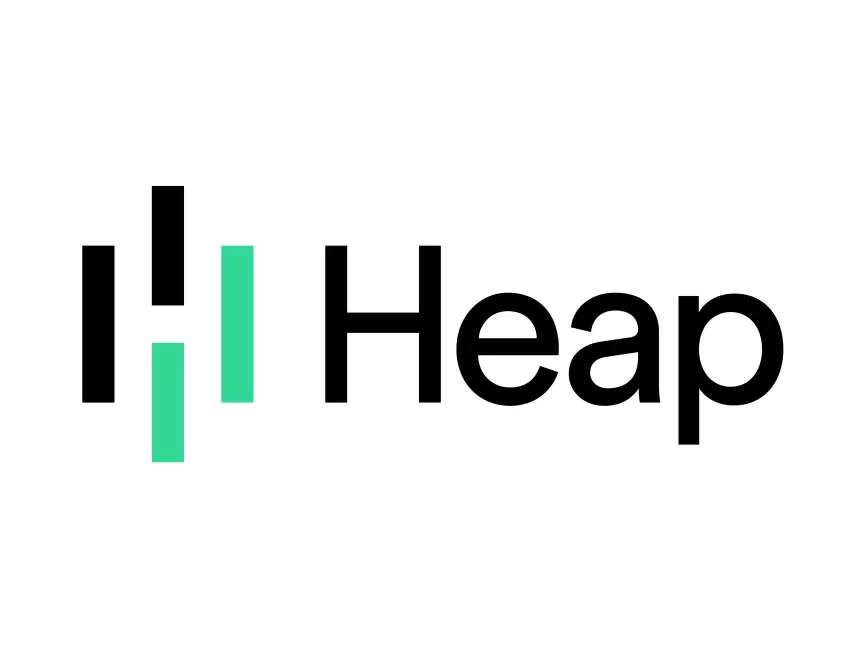Choosing the right marketing analytics tool is pivotal in today’s data-driven world. It can feel like navigating a labyrinth, especially when you’re weighing giants like Adobe Analytics against innovative upstarts like Heap. Each platform offers unique strengths, tailored to different business needs and analytical depths. Whether you’re a seasoned marketer or just dipping your toes into the data ocean, finding the tool that aligns with your strategy is key to unlocking actionable insights and driving growth. So, let’s cut through the noise and dive deep into what makes Adobe Analytics and Heap stand out from the crowd.
| Adobe Analytics | Heap |
|---|---|
 |  |
| G2 Score – 4.1 out of 5 stars | G2 Score – 4.4 out of 5 stars |
| TrustRadius Score – 8.2 out of 10 | TrustRadius Score – 8.2 out of 10 |
Ease of Implementation and Use
When it comes to integrating a marketing analytics tool into your business operations, the ease of implementation and user experience play critical roles. They determine not just how quickly you can get up and running, but also how effectively your team can harness the tool’s capabilities.
Adobe Analytics: Robust but Complex
Adobe Analytics is a powerhouse, offering a depth of data analysis that’s hard to match. It’s designed for enterprises that require comprehensive insights across multiple channels and platforms. However, this sophistication comes with a complexity that can be daunting. Implementing Adobe Analytics typically requires a dedicated team or specialists familiar with its environment. The setup involves a detailed understanding of your digital properties and a strategic plan for tracking the metrics that matter most to your business.
Once up and running, Adobe Analytics presents a steep learning curve. Users must navigate through a multitude of features and customization options. The platform is incredibly powerful, but unlocking its full potential often requires advanced knowledge of data analysis and a solid grasp of the Adobe ecosystem.
Heap: Streamlined and Intuitive
Heap takes a different approach. It’s designed with simplicity and automation at its core, making it an attractive option for businesses looking for a quick start and an intuitive interface. Heap automatically captures every user interaction on your website or app from the moment it’s installed, eliminating the need for manual tracking setup. This means you can start analyzing user behavior right away without the need for extensive planning or technical resources.
The platform’s user interface is clean and user-friendly, making data analysis accessible to team members with varying levels of expertise. Heap’s focus on automation and ease of use doesn’t mean it lacks depth. On the contrary, it offers powerful analytical capabilities, but they’re wrapped in a package that’s less intimidating and more approachable for the average user.
The Verdict on Ease of Implementation and Use
If your organization has the resources and the need for the deep, granular insights that Adobe Analytics provides, its complexity might be a worthwhile investment. On the other hand, if you’re looking for a tool that offers valuable insights with minimal setup and a gentle learning curve, Heap could be the way to go. Your choice should align with your team’s technical capabilities, your strategic needs, and how quickly you want to start leveraging insights from your data.
Data Collection and Integration Capabilities
In the realm of marketing analytics, the breadth and depth of data you can collect and analyze are critical. Equally important is how well your analytics tool integrates with other platforms and tools in your marketing technology stack. Let’s examine how Adobe Analytics and Heap handle data collection and integration.
Adobe Analytics: Comprehensive and Customizable
Adobe Analytics excels in its ability to collect a wide range of data types from various sources. It’s designed for businesses that require detailed insights into their customers’ journey across multiple touchpoints, including web, mobile, social, and IoT devices. Adobe’s platform allows for the customization of data collection methods to fit unique business requirements, offering precise control over what data is tracked and how it’s interpreted.
The platform’s integration capabilities are extensive, thanks to its place within the Adobe Experience Cloud. This ecosystem includes tools for content management, campaign management, audience segmentation, and more. Adobe Analytics can seamlessly share data with these tools, providing a holistic view of the customer experience. Additionally, Adobe offers integrations with third-party platforms, although implementing these can sometimes require additional development work.
Heap: Automatic and Agile
Heap’s approach to data collection is radically different. By automatically capturing every interaction on your website or mobile app without the need for predefined events or tracking codes, Heap dramatically simplifies the data collection process. This automatic capture means that you can retroactively analyze actions on your site without having to predict in advance what you might want to track. This feature is particularly beneficial for businesses that are evolving rapidly and may not have a clear picture of what metrics will be most valuable in the future.
When it comes to integration, Heap offers a robust set of options, especially with tools commonly used by its target audience of SMBs and startups. These include platforms for email marketing, customer support, CRMs, and advertising. While Heap’s ecosystem may not be as extensive as Adobe’s, the integrations are generally more straightforward to implement and are designed to be user-friendly, requiring less technical expertise to set up and manage.
Making the Choice: Depth vs. Flexibility
The decision between Adobe Analytics and Heap in the context of data collection and integration hinges on your organization’s specific needs. If you require deep, customizable data collection across a wide array of channels and a tight integration within a comprehensive marketing technology stack, Adobe Analytics is the better choice. Its capabilities are designed for large enterprises with complex data needs and the resources to manage them.
On the other hand, if your priority is getting up and running quickly, with the flexibility to analyze data without extensive upfront planning, Heap offers a compelling proposition. Its automatic data collection and user-friendly integrations make it ideal for businesses that value agility and simplicity over granular control.
Each tool presents a different approach to handling data, reflecting the diverse needs of businesses in today’s fast-paced digital environment. Your choice should align with your strategic objectives, technical capabilities, and the level of detail you need from your marketing analytics.
User Interface and Reporting Capabilities
The user interface (UI) and reporting capabilities of a marketing analytics tool can significantly impact your team’s ability to derive insights and make data-driven decisions. A well-designed UI and powerful reporting features can transform raw data into actionable intelligence. Here’s how Adobe Analytics and Heap stack up in these areas.
Adobe Analytics: Advanced but Complex
Adobe Analytics offers a highly advanced reporting interface that caters to data analysts and marketers who need deep dives into their data. The platform provides a wide array of customizable dashboards and reports that can be tailored to specific business questions. With its capability to handle large datasets and perform complex segmentations, Adobe Analytics is designed for users who require detailed analysis and are comfortable navigating through a sophisticated interface.
However, this sophistication comes with complexity. New users may find the UI overwhelming, and there is a significant learning curve involved in mastering Adobe Analytics’ full suite of reporting tools. Businesses often need to invest in training for their staff to fully leverage the platform’s capabilities.
Heap: Intuitive and User-Friendly
Heap takes a more streamlined approach to its UI and reporting functions, focusing on accessibility and ease of use. The platform is designed to be intuitive, with a clean interface that allows users to quickly find the insights they need without extensive training. Heap’s automatic data capture philosophy extends to its reporting features, enabling users to easily create and customize reports without the need for advanced technical skills.
Heap’s reports are visually appealing and straightforward to interpret, making it easier for teams to share insights across the organization. While Heap may not offer the same level of depth in its reporting capabilities as Adobe Analytics, it provides sufficient power for most businesses to make informed decisions based on their data.
The Decision: Complexity vs. Accessibility
Choosing between Adobe Analytics and Heap in terms of UI and reporting should be based on your team’s expertise and your specific reporting needs. If your organization requires granular analysis and has the resources to invest in training, Adobe Analytics’ advanced reporting capabilities could be a significant asset. Its ability to uncover deep insights from complex data sets is unmatched, but it requires a commitment to navigate its complexity.
Conversely, if you’re looking for a tool that offers quick access to insights with a minimal learning curve, Heap’s intuitive design and user-friendly reporting features make it an attractive option. It’s particularly suited to businesses that prioritize efficiency and ease of use over exhaustive data manipulation capabilities.
Ultimately, the choice depends on balancing the depth of analysis you need with the accessibility and ease of use that will enable your team to make the most of your marketing analytics tool.

Related: Check out our free SEO suite

Scalability and Growth Support
As businesses evolve, their analytics needs grow and change. Scalability and the ability to support growth become crucial factors in selecting a marketing analytics tool. Both Adobe Analytics and Heap offer features aimed at scaling with your business, but they approach scalability in different ways. Let’s dive into how each platform supports growth and scales with your needs.
Adobe Analytics: Enterprise-Level Scalability
Adobe Analytics is built for scale, catering to the needs of large enterprises and organizations with complex data environments. It’s designed to handle vast amounts of data from various sources, making it well-suited for businesses that operate on a global scale or across multiple digital platforms. Adobe Analytics allows for the addition of new data sources and the integration of new digital properties as your business grows, ensuring that your analytics capabilities can keep pace with your expansion.
The platform’s robust infrastructure supports the processing of large datasets without sacrificing performance, ensuring that businesses can continue to derive insights even as data volume grows. Furthermore, Adobe’s suite of products offers additional tools for businesses at different stages of growth, providing a pathway for expanding your analytics capabilities as your needs become more sophisticated.
Heap: Agile Growth Support
Heap’s approach to scalability is slightly different, focusing on agility and flexibility. It’s designed to be immediately useful for startups and small to medium-sized businesses, offering automatic data capture that ensures you’re collecting valuable user interaction data from day one. As your business grows, Heap’s platform can easily adapt, capturing more interactions and providing insights across an expanding digital footprint without requiring significant adjustments to your tracking setup.
Heap excels in environments where businesses are rapidly iterating on their digital products. Its ability to retroactively analyze user actions means that you can adapt your analytics focus as your business evolves, without needing to predict every data point you might need to track in the future. This flexibility makes Heap an attractive option for growing businesses that value the ability to pivot quickly and often.
Choosing the Right Tool for Your Growth Path
The decision between Adobe Analytics and Heap in terms of scalability and growth support should be aligned with your business’s trajectory and data complexity. Adobe Analytics offers a powerful solution for large enterprises or businesses with advanced analytics needs, providing the infrastructure needed to handle complex data environments and global scale. Its ability to integrate deeply with other Adobe products also presents a clear path for expanding your analytics capabilities as your business grows.
On the other hand, Heap is ideal for businesses that prioritize flexibility and agility, offering a platform that can adapt to your evolving needs without requiring constant configuration adjustments. Its automatic data capture and retroactive analysis capabilities ensure that you can scale your analytics efforts alongside your business, making it a strong choice for startups and fast-growing companies.
Your choice should consider not only where your business stands today but also where you expect to be in the future. Assessing your projected growth and how you plan to use data to drive that growth will help you select the analytics tool that best supports your journey.
Integration Capabilities and Ecosystem
The ability of a marketing analytics tool to integrate with other software and platforms is vital for a seamless data flow and comprehensive analysis. Both Adobe Analytics and Heap offer a range of integration capabilities, but their ecosystems and the ease with which they connect to other tools can significantly impact their utility for your business.
Adobe Analytics: Extensive Ecosystem
Adobe Analytics is part of the Adobe Experience Cloud, which offers a broad ecosystem of marketing, advertising, and analytics solutions. This integration within Adobe’s suite means that it can effortlessly connect with other Adobe products, such as Adobe Experience Manager, Adobe Campaign, and Adobe Target, providing a unified analytics and marketing platform. Beyond Adobe’s own ecosystem, Adobe Analytics supports integrations with third-party software, including CRM systems, email marketing platforms, and advertising networks. These integrations are facilitated through APIs and Adobe Exchange, a marketplace for apps that extend the capabilities of Adobe products.
The extensive integration capabilities of Adobe Analytics make it an attractive option for large enterprises that require a comprehensive digital marketing and analytics solution. However, setting up and managing these integrations can be complex and may require dedicated IT support.
Heap: Streamlined Integration Process
Heap focuses on providing a more streamlined and accessible integration process, targeting businesses that may not have extensive IT resources. It offers out-of-the-box integrations with popular tools used by startups and SMEs, including e-commerce platforms, email marketing services, and customer relationship management (CRM) systems. Heap’s integrations are designed to be user-friendly, often requiring just a few clicks to connect and start sharing data.
One of Heap’s strengths is its flexibility in sending data to other tools, such as marketing automation platforms and A/B testing tools, allowing businesses to leverage Heap’s insights across their entire digital marketing stack. While its ecosystem may not be as extensive as Adobe’s, Heap’s integration capabilities are generally easier to implement and manage, making it a good fit for businesses looking for a straightforward way to connect their analytics with other operational tools.
Making the Right Integration Choice
When evaluating Adobe Analytics and Heap based on their integration capabilities and ecosystems, consider the complexity of your existing tech stack and your internal resources. Adobe Analytics is well-suited for enterprises that already use multiple Adobe products or that require a wide range of integrations with third-party systems. Its extensive ecosystem and deep integration capabilities offer a powerful solution for businesses looking to leverage analytics across a complex digital landscape.
In contrast, Heap’s approach is tailored for agility and ease of use, making it a better match for startups, SMEs, or any business looking for a hassle-free integration experience. Its straightforward integration process ensures that you can quickly connect Heap with other tools in your marketing stack, enabling a cohesive flow of data without the need for extensive technical support.
Ultimately, the choice between Adobe Analytics and Heap should be guided by your business’s specific needs, the complexity of your digital ecosystem, and your capacity to manage integrations. Each tool offers distinct advantages in how it connects with other platforms, affecting the overall effectiveness and efficiency of your marketing analytics efforts.
Pricing and Value for Money
The cost of a marketing analytics tool and the value it delivers for that cost is a critical consideration for businesses of all sizes. Both Adobe Analytics and Heap come with different pricing models and value propositions, catering to various budgets and requirements. Understanding these can help businesses make an informed decision that aligns with their financial constraints and analytics needs.
| Adobe Analytics | Adobe Analytics does not publicly disclose its pricing, as it tailors costs to each customer’s specific needs. However, it’s suggested that prices can range from $48,000 to $350,000 per year. |
| Heap | Heap offers both Free and custom-priced Enterprise plans. The Free plan supports up to 10,000 sessions per month, while Enterprise plan pricing is based on the volume of data and specific feature requirements. |
Adobe Analytics: Enterprise-Level Pricing
Adobe Analytics is targeted primarily at enterprise-level clients, and its pricing reflects this positioning. The cost is based on a custom quote, which is determined by a variety of factors, including the volume of data processed, the number of users, and the specific features or modules required. This tailored pricing approach ensures that businesses only pay for what they need, but it also means that Adobe Analytics can represent a significant investment, particularly for large organizations with extensive data analysis needs.
The value offered by Adobe Analytics is in its depth of analysis, comprehensive data collection capabilities, and integration within the Adobe ecosystem. For businesses that require detailed insights across multiple channels and the ability to leverage advanced analytics features, Adobe Analytics can deliver significant ROI, justifying its higher cost.
Heap: Flexible Pricing for Different Needs
Heap offers a more transparent and flexible pricing structure, with plans designed to accommodate the needs of businesses at various stages of growth. Pricing tiers typically include a free plan with basic features for small sites or startups, all the way up to custom-priced enterprise plans that offer advanced capabilities and higher data limits. This approach allows businesses to start with a lower-cost plan and scale up as their needs grow, making Heap accessible to a wider range of businesses.
The value Heap provides lies in its ease of use, automatic data collection, and the ability to generate insights quickly without extensive setup or ongoing management. For startups and SMEs, Heap’s pricing model offers an attractive balance of cost and functionality, providing the tools needed to make data-driven decisions without a large upfront investment.
Balancing Cost Against Analytics Needs
When comparing Adobe Analytics and Heap based on pricing and value for money, the decision should be based on your business’s specific analytics requirements, budget constraints, and expected ROI from the analytics tool. Adobe Analytics is a robust solution designed for enterprises that need deep, customizable analytics and are willing to invest in a premium tool. Its value becomes apparent for businesses that can fully utilize its advanced features to drive strategic decisions.
Heap, on the other hand, offers a cost-effective solution for businesses that need straightforward, actionable insights without the complexity (and associated costs) of enterprise-level analytics platforms. Its flexible pricing model makes it an attractive option for businesses looking to scale their analytics capabilities in line with their growth.
Ultimately, the choice between Adobe Analytics and Heap should take into account not just the initial cost, but also the long-term value each platform can bring to your business. Assessing your current and future analytics needs against the pricing structures and capabilities of each tool will help you select the one that offers the best value for your investment.
Conclusion
Choosing between Adobe Analytics and Heap hinges on understanding your business’s unique analytics needs, budget, and growth trajectory. Adobe Analytics stands out for enterprises requiring deep, customizable insights integrated within a broader digital marketing ecosystem. Its strength lies in handling complex data analysis across multiple channels, making it a fit for larger organizations ready to invest in a comprehensive solution. On the other hand, Heap offers a more accessible entry point for startups and SMEs, emphasizing ease of use, automatic data tracking, and a scalable pricing model that grows with your business.
The decision ultimately rests on matching the tool to your analytics ambitions, with Adobe Analytics catering to depth and breadth of data exploration, and Heap focusing on simplicity and immediate value. Both platforms have their merits, and the best choice reflects a balance between your immediate needs and future aspirations, ensuring your marketing analytics tool not only fits today’s requirements but is also a strategic asset for tomorrow.
Read Next:
- 31+ Top Social Media Management tools Compared! (2023)
- Content Marketing for SaaS Companies: Driving Growth and Retention
- The Role of User Feedback in Refining Your Email Marketing Strategy
- Email Marketing for the Travel and Tourism Sector: Engaging Travel Enthusiasts
- The Power of Drip Campaigns in Email Marketing: Nurturing Leads Over Time





















Comments are closed.